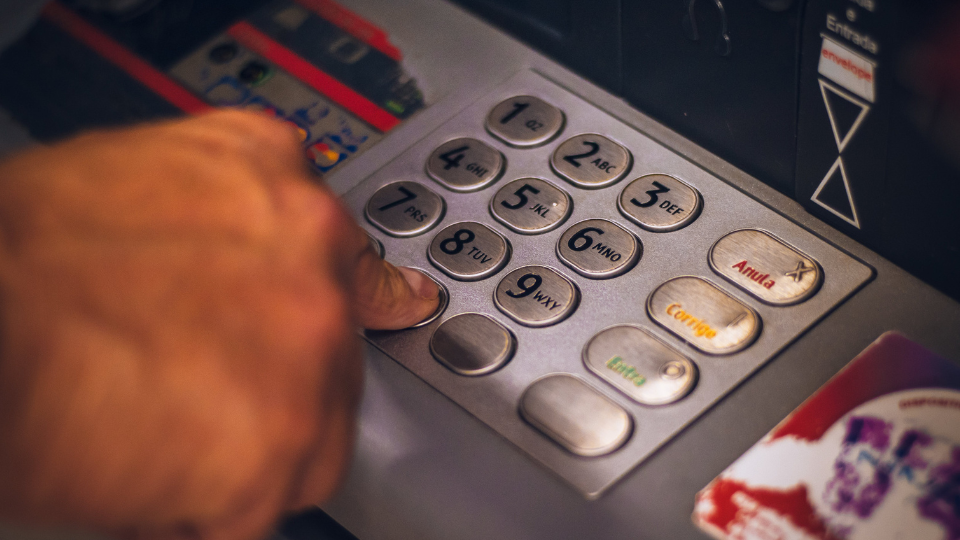
Savings accounts are a smart place to keep money for your short- and long-term financial goals, such as a future home down-payment or starting a business. However, sometimes you may need to access your savings earlier than expected. Withdrawing money from your savings account is relatively straightforward, but the process depends on your bank’s specific policies.
How To Withdraw Money From a Savings Account
There are several ways to withdraw money from a savings account. Remember that all withdrawals count toward your monthly withdrawal limits, which your bank sets.
Take Money Out at an ATM
One of the quickest ways to withdraw money from a savings account is at an ATM. Depending on your bank, you can use your physical debit card or mobile wallet to access the funds in your account. Keep in mind there may be fees to take out money from a savings account at an out-of-network ATM.
Also Read: How To Get Cash From A Credit Card At An ATM
Visit Your Local Branch
You can visit your local bank branch during regular business hours and speak with a teller to withdraw money from your savings account. Be sure to bring a form of photo identification, such as a bank’s passbook.
Write a Check
If your savings account comes with checks, you can withdraw money from your account by writing a check out to cash. Write “Your Name” next to “Pay” and “Cash Amount” next to “Rupees”, then complete the rest of the check as you normally would.
Transfer Money Into Your Checking Account
An online transfer from your savings into your checking account may be more convenient, especially if no in-network ATMs or physical bank branches are nearby. If you keep your savings at an online bank, an online transfer may be the quickest option.
Why Can’t I Transfer Money From Savings To Checking?
Most banks allow transfers from savings to checking accounts, but there may be instances when you’re unable to. The factors below may affect your ability to complete a transfer from your savings to your checking account.
Regulation D Limits
Regulation D is a federal regulation that restricts the number of transfers and withdrawals you can make from your savings account within any given statement cycle. These limitations are intended to encourage consumers to use savings accounts for saving money rather than for frequent withdrawals.
Many banks did away with Regulation D requirements during the Covid-19 pandemic. However, some banks still enforce Regulation D withdrawal limits. Reach out to your bank or visit their website for the most up-to-date information.
Timing
Depending on when you request a transfer or withdrawal, you may not receive the funds right away. Each bank has its own cutoff times. For example, some banks offer same-day online transfers on weekdays before 5:00 p.m. If you initiate a transfer on the weekend, you may not receive the funds until the following business day. Visiting an ATM may be the quickest option if you need cash immediately.
Why Are There Limits on Payments From Your Savings Account?
The payment limits on savings accounts exist for several reasons:
- Regulation D requirements. Regulation D limits the number of monthly withdrawals and transfers you can make from a savings account. If you repeatedly exceed the withdrawal limit, your bank may charge an over-the-limit fee for each additional withdrawal or, in some cases, close your account.
- Withdrawal: The maximum cash withdrawal limit is different for everyone as per their banks rules and regulations across the country. However, the withdrawal limit ranges from INR 10,000 to INR 1 lakh.
- To discourage withdrawals. Money in a savings account is meant to be saved, not spent. Limiting the number of withdrawals may deter people from spending their savings unless necessary.
- To manage bank reserves. Banks must maintain adequate cash to handle customer demands and potential economic fluctuations. Limiting payments from savings accounts helps banks manage their cash flow, ensuring they always have sufficient funds available.
Steps To Withdraw From a Savings Account
Here are the steps to withdraw money from a savings account.
- Ensure sufficient funds. Confirm you have enough money in savings to cover the amount you wish to withdraw. Writing a check for an amount exceeding your account balance can result in overdraft fees or a bounced check.
- Review your withdrawal limits. Many banks limit the frequency of savings withdrawals to six per month. Exceeding the limit can result in fees and potential account closure. Reviewing your bank’s withdrawal limits is crucial to avoid these consequences.
- Choose your withdrawal method. Depending on your bank and type of savings account, you can withdraw cash from an ATM, over the phone, in person or via online transfer to your checking account.
Bottom Line
The money in your savings account is meant for your financial goals, but life happens, and sometimes withdrawals are necessary to handle emergencies and other financial needs. By understanding your bank’s withdrawal options and restrictions, you ensure easy access to your money when you need it.
Frequently Asked Questions (FAQs)
How much can I withdraw from a savings account?
You can withdraw as much as needed from a savings account up to the available balance. However, the frequency at which you can withdraw funds depends on the policies and withdrawal limits in place at your bank.
Can I withdraw from my savings at an ATM?
In many cases, yes. You should be able to withdraw money from your savings account at an ATM. After you insert your card and punch in your PIN, you should be able to choose the account to withdraw money from, such as your savings or checking account.
Do savings accounts come with a debit card?
Typically, no, because savings accounts are designed for saving money and earning interest, not frequent transactions. However, savings accounts do come with Debit/ATM cards.








